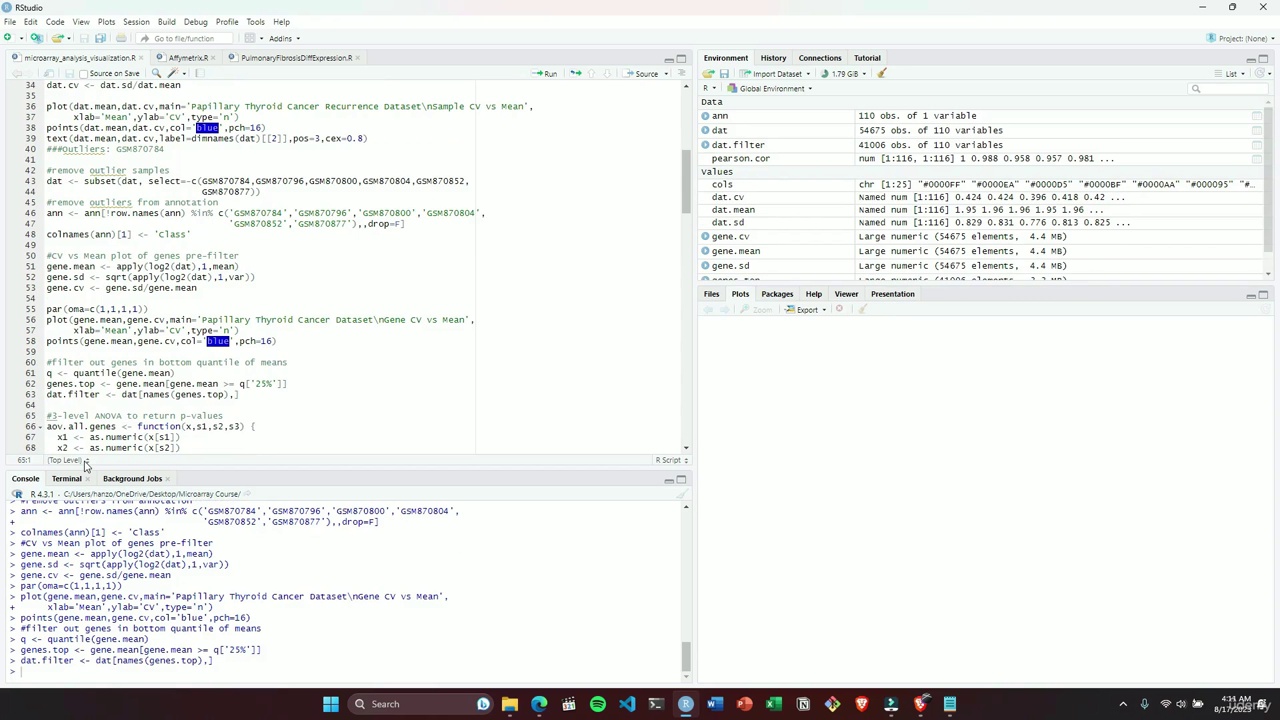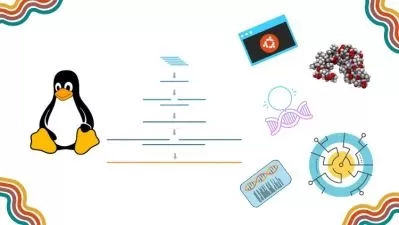Full Guidance on Bioinformatics Databases (Updated)
Muhammad Ahsan Riaz
2:47:49
Description
A Detailed Guidance on typically Databases used in Bioinformatics with their usage and explanation
What You'll Learn?
- You will learn complete understanding on Bioinformatics Databases. From basic to advance concepts.
- Different databases used in bioinformatics
- After this practical course you will confidently choose database according to your research need without any doubts.
- You will learn 35+ Different Databases used in Bioinformatics
- Primary Databases in Bioinformatics
- Secondary Databases in Bioinformatics
- Nucleic acid Databases in Bioinformatics
- Phenotype and Genome Databases
- Amino Acid / Protein Databases in Bioinformatics
- Specialized Databases in Bioinformatics
- Complete up-to Date Beginner's Guide of top Nucleic acid Databases Used in Bioinformatics along with their utilization
- Complete up-to Date Beginner's Guide of top Amino Acid / Protein Databases Used in Bioinformatics along with their utilization
- You will gain concrete diffrences between Primary, Seconday and Composite database. The knowledge will help you to choose curated and reviewed data.
Who is this for?
What You Need to Know?
More details
DescriptionThis Bioinformatics course is going to game changer for you. Currently, there is an explosion of biological data. Bioinformatics is at the intersection of biology and computer science.
What is Bioinformatics ?
In biology, bioinformatics is defined as, “the use of computer to store, retrieve, analyze or predict the composition or structure of bio-molecules†. Bioinformatics is the application of computational techniques and information technology to the organization and management of biological data. Classical bioinformatics deals primarily with sequence analysis.
Aims of Bioinformatics
Development of database containing all biological information.
Development of better tools for data designing, annotation and mining.
Design and development of drugs by using simulation software.
Design and development of software tools for protein structure prediction function, annotation and docking analysis.
Creation and development of software to improve tools for analyzing sequences for their function and similarity with other sequences
Biological Databases
Biological data are complex, exception-ridden, vast, and incomplete. Therefore several databases have been created and interpreted to ensure unambiguous results. A collection of biological data arranged in a computer-readable form that enhances the speed of search and retrieval and convenient to use is called a biological database. A good database must have updated information.
Importance of Biological Database
A range of information like biological sequences, structures, binding sites, metabolic interactions, molecular action, functional relationships, protein families, motifs and homologous can be retrieved by using biological databases. The main purpose of a biological database is to store and manage biological data and information in computer readable forms.
In this course we learned about the different biological databases that are being used in bioinformatics and get to know a little bit about their details. Mainly these databases are divided into four categories and we learned about them base by base. And explained the difference among the primary and secondary database and explained their utilization in bioinformatics.
This course will be extremely helpful to students of data analyst and bioinformaticians because they use the databases a lot in their work.
If you guys have any questions or suggestions please let me know in instructor inbox I’ll try to answer all of your questions within 12 hours.
Who this course is for:
- Bioinformaticians are Encouraged to take this course.
- Data Scientist are Encouraged to take this course
- Researchers are also encouraged to take this Course
This Bioinformatics course is going to game changer for you. Currently, there is an explosion of biological data. Bioinformatics is at the intersection of biology and computer science.
What is Bioinformatics ?
In biology, bioinformatics is defined as, “the use of computer to store, retrieve, analyze or predict the composition or structure of bio-molecules†. Bioinformatics is the application of computational techniques and information technology to the organization and management of biological data. Classical bioinformatics deals primarily with sequence analysis.
Aims of Bioinformatics
Development of database containing all biological information.
Development of better tools for data designing, annotation and mining.
Design and development of drugs by using simulation software.
Design and development of software tools for protein structure prediction function, annotation and docking analysis.
Creation and development of software to improve tools for analyzing sequences for their function and similarity with other sequences
Biological Databases
Biological data are complex, exception-ridden, vast, and incomplete. Therefore several databases have been created and interpreted to ensure unambiguous results. A collection of biological data arranged in a computer-readable form that enhances the speed of search and retrieval and convenient to use is called a biological database. A good database must have updated information.
Importance of Biological Database
A range of information like biological sequences, structures, binding sites, metabolic interactions, molecular action, functional relationships, protein families, motifs and homologous can be retrieved by using biological databases. The main purpose of a biological database is to store and manage biological data and information in computer readable forms.
In this course we learned about the different biological databases that are being used in bioinformatics and get to know a little bit about their details. Mainly these databases are divided into four categories and we learned about them base by base. And explained the difference among the primary and secondary database and explained their utilization in bioinformatics.
This course will be extremely helpful to students of data analyst and bioinformaticians because they use the databases a lot in their work.
If you guys have any questions or suggestions please let me know in instructor inbox I’ll try to answer all of your questions within 12 hours.
Who this course is for:
- Bioinformaticians are Encouraged to take this course.
- Data Scientist are Encouraged to take this course
- Researchers are also encouraged to take this Course
User Reviews
Rating
Muhammad Ahsan Riaz
Instructor's Courses
Udemy
View courses Udemy- language english
- Training sessions 36
- duration 2:47:49
- Release Date 2023/12/16










